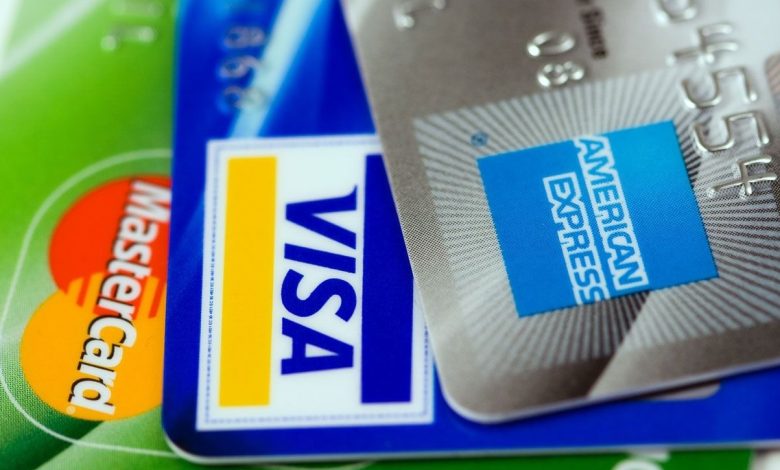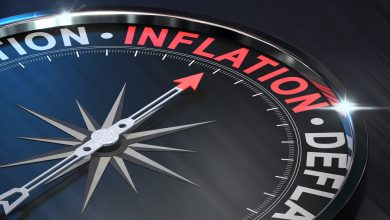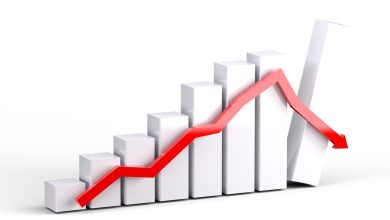Americans Worried About a Credit Crunch; What Happens When Consumers Can’t Charge It?

Americans are worried about a looming credit crunch. That’s a big problem for an economy that runs on credit cards.
One of the reasons for economic optimism you’ll hear bandied about out there in the mainstream is “the American consumer is strong” and consumer spending is “holding up” despite price inflation. But nobody seems to ask an important question: how have Americans been able to continue spending?
The answer is credit cards.
So, what’s going to happen when consumers finally max out the plastic?
We may be getting close to that point, and many people are worried that they aren’t going to be able to borrow the money they need to keep spending.
As prices skyrocketed last year, Americans blew through their savings to make ends meet. Aggregate savings peaked at $2.1 trillion in August 2021. As of June, the San Francisco Fed estimated that aggregate savings had dropped to $190 billion.
In other words, Americans ate away $1.9 trillion in savings in just two years.
Then they turned to credit cards.
Americans used stimulus money to pay down credit card debt during the pandemic. Americans owed a little over $1 trillion in revolving debt when the pandemic began. It fell below that level in 2020 thanks to an 11.2% drop. We saw small upticks in credit card balances in February and March of 2021 as the recovery began, with a sharp drop in April when another round of stimulus checks rolled out. But Americans started borrowing in earnest again in May 2021. Since then, we’ve seen a relatively steady increase in revolving debt.
As of the end of July, Americans owed $1.27 trillion in revolving credit.
The bigger problem is the double whammy of rising debt and rising interest rates. Average credit card interest rates eclipsed the previous record high of 17.87% months ago. The average annual percentage rate (APR) currently stands at 20.71%.
As a result, more and more Americans are struggling to pay their credit card balances.
Now there is another looming problem. It’s getting harder for Americans to borrow money.
And that has them worried.
Nearly 60% of the respondents in a New York Fed consumer expectations survey said it’s harder to get credit cards, mortgages and other loans than it was a year ago. It was the highest level since the New York Fed started the data series back in 2013.
Another Fed survey of loan officers reveals their fears aren’t unfounded. Banks reported that lending standards tightened across all consumer loan categories and all categories of residential real estate (RRE) loans. Meanwhile, the number of banks reporting tighter standards for credit cards rose by 36%.
Banks have also significantly tightened standards for business loans.
This is a recipe for disaster.
We have an economy that runs on debt and borrowing. Debt has become much more expensive with rising interest rates and it’s getting harder to get loans. Meanwhile, more and more Americans are maxing out their credit cards, and they are starting to have trouble paying the bills.
It seems likely that at some point in the near future, the tidal wave of debt is going to drown the “resilient American consumer” and the American economy is going to plunge over a cliff.
The mainstream narrative is that the economy is fine because consumers are still spending despite high price inflation and rising interest rates. But nothing about this is fine.
The underlying assumption is that Americans wouldn’t keep spending if they were really in trouble. But I think a lot of people are spending on credit cards precisely because they are in trouble. They don’t have a choice.
A JD Power analyst made this very point.
The pandemic-era savings cushions are gone, the economy is shaky and consumers are leaning more heavily than ever on their credit cards to cover day-to-day expenses. Consumers are using their cards for a lot of everyday purchases. Grocery shopping is the lead purchase type that consumers say they are making.”
Even the mainstream is starting to recognize this isn’t a sustainable trajectory. Bloomberg reported, “Despite persistent inflation and high interest rates, consumer spending has remained resilient and helped power the economy. Some have resorted to credit cards and savings to do so, but with savings shrinking and delinquencies on the rise, some economists doubt the current spending momentum is sustainable.”
It’s not.
Americans have managed to kick the can down the road using credit cards and accumulated savings. The question is how much road is left?
Call 1-888-GOLD-160 and speak with a Precious Metals Specialist today!
Buka akaun dagangan patuh syariah anda di Weltrade.
Source link






